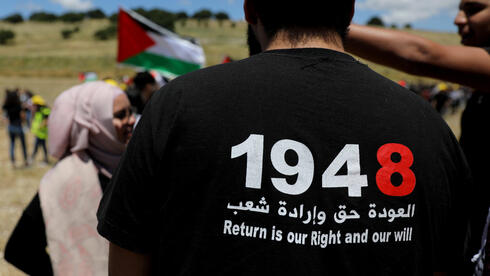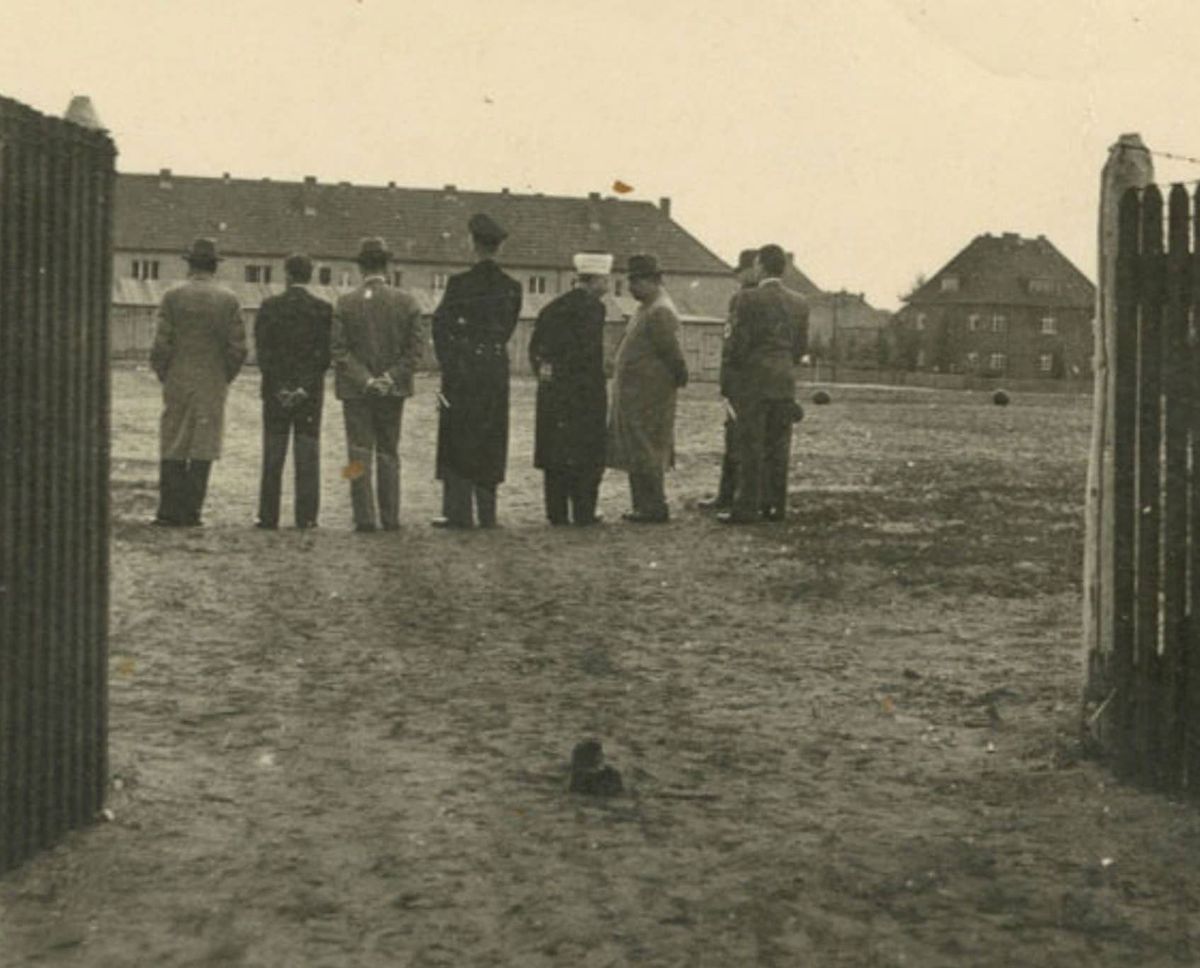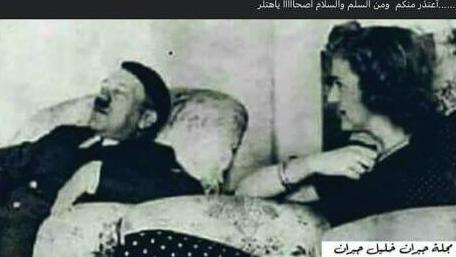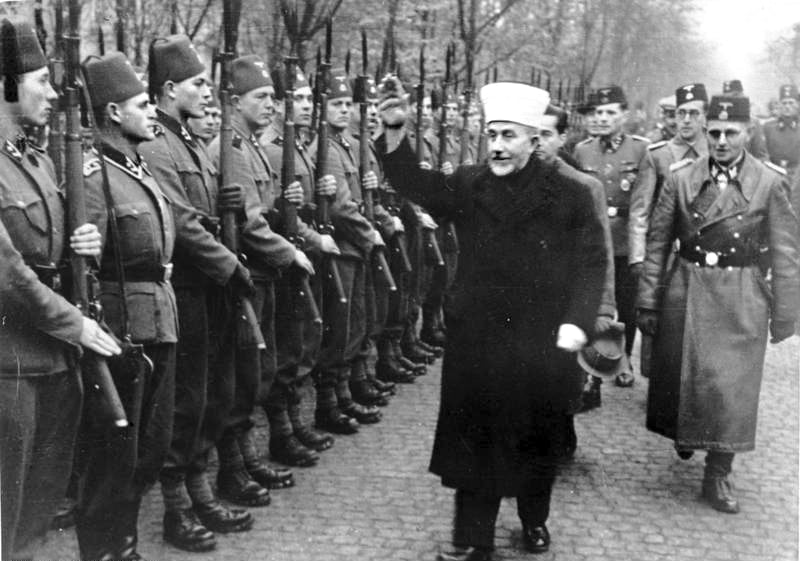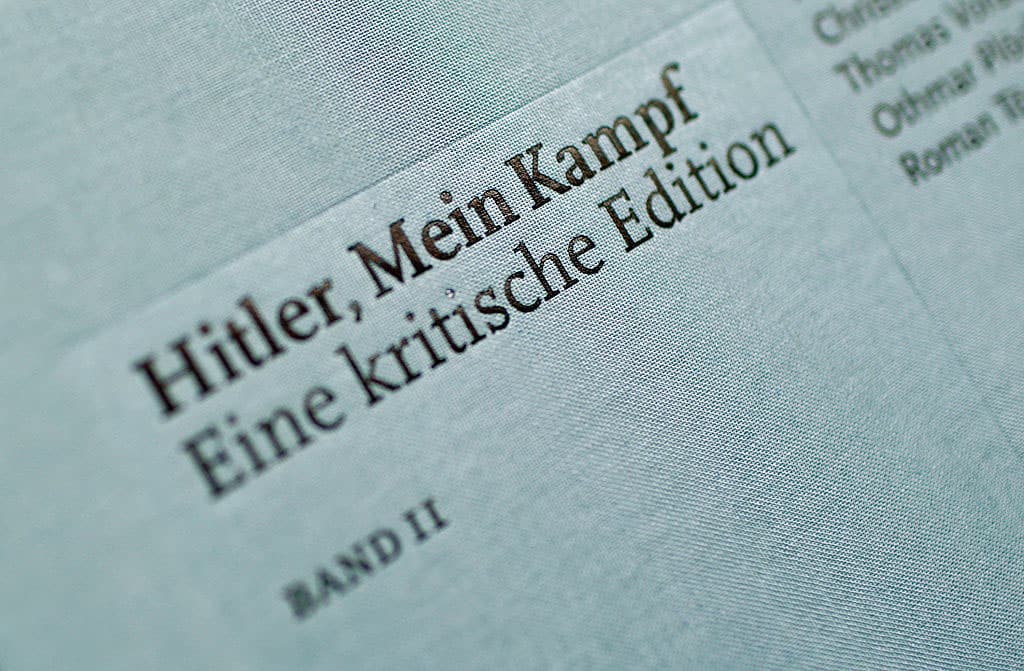NAZISM AND ARAB PALESTINE SINCE 1933
1933:
"Noble Hitler" — Says "Falastin " — The Palestine Post 22 May 1933
___
Goebbels in 1938: "in Palestine... the Arabs admire the fuhrer as though he were holy".
Zimmermann, Moshe. Germans Against Germans: The Fate of the Jews, 1938–1945. United States, Indiana University Press, 2022,
p. 201.
____
1934-1936: Arabs boycott Jews with Swastikas
Arabs Use Swastika in Fight for Trade of Jews in Holy Land.
JTA, Aug 14, 1934 .
Arabic posters with the swastika prominently displayed and advocating a boycott of all Jewish stores have suddenly appeared in Arab shop windows in Jerusalem and Haifa. At the same time walls in the two cities were placarded with the Arabic swastika posters. The anti-Jewish boycott movement...

www.jta.org
___
1936:
Hitler's "Mein Kampf" in Arabic best seller in Palestine, Iraq, Syria and other Arabic land...
The Canadian Jewish Chronicle, Dec 4, 1936 (p.7)
____
1937:
All Arabs in Palestine celebrate Muhammad's birthday with Hitler photos...
New York Times, May 23, 1937.
Cheered by Palestine Arabs celebrating Mohammed's birthday

www.nytimes.com
___
Arabs Hail Hitler As Racial Friend (Sep. 1938)
Prescott Evening Courier, Sep 13, 1938 (p.1)
_____
Journalist John Gunther in 1939: "Hitler is tremendously popular with the Arabs... The greatest contemporary Arab hero is – Adolf Hitler."
Gunther, John. Inside Asia. United Kingdom, Harper, 1939, p.528.
Link
____
1941 poll: 88% of Palestine Arabs for Hitler.
Nakba was result of Palestinians backing Nazis during WWII.
Opinion: The longer only one side of the so-called Palestinian Catastrophe is cultivated, the longer hatred will continue to be nurtured, while historical facts point to Palestinians openly supporting Nazi propaganda during WWII

www.ynetnews.com
____
Photographic Evidence Shows Palestinian Leader Amin al-Husseini at a Nazi Concentration Camp
An analysis of photographs sold at a Jerusalem auction house offers new insight into the role of foreign accomplices in Hitler’s Final Solution
An analysis of photographs sold at a Jerusalem auction house offers new insight into the role of foreign accomplices in Hitler’s Final Solution

www.tabletmag.com
____
Palestine pan Arab leader, the Mufti: 1942, planned crematorium in the holy land.
A veteran Israeli journalist recalled on Friday that research he conducted in 1968 revealed a plan by Jerusalem's World War II -era grand mufti to build a crematorium in Samaria, Israeli daily Israel Hayom reported. As part of his research on Grand Mufti Haj Amin al-Husseini's actions in 1942...

www.algemeiner.com
____
CONFESSIONS:
Ahmad
Shukeiri (Shukairy, Shuqayri):
We prayed and cheered for Hitler.
*Encounter. United Kingdom, Encounter Limited, 1972,
p.76 .
*Kedourie, Elie. Arabic Political Memoirs and Other Studies. United Kingdom, Taylor & Francis, 2012,
p. 190 .
*Milstein, Uri. History of the War of Independence: A nation girds for war. United Kingdom, University Press of America, 1996, p. 160.
Aḥmad Shuqayrī, Beirut: Dār al-Nahār, 1969, p.196:
"
Our sympathies were with the Axis countries, headed by Hitler who led them from victory to victory. With our sympathies, our prayers were for victory for Germany."
_____
PLO:
PLO Official: We Supported the Nazis in WWII. INN, Dec 9, 2013.
Former political bureau head of the Palestine Liberation Organization (PLO) removes any doubt over Arab support for Nazi Germany....
Qaddoumi replied, “Germany, yes. This was common among the Palestinians,
especially since our enemy was Zionism, and we saw that Zionism was hostile to Germany, and vice versa.”
These remarks are just the latest evidence of the Arab support for Nazis and for genocide of Jews....
1948:
Hitler's army are active with many groups of Arab invaders in Palestine.
Palestine. (1948). United States: AZC, vol. 5, p. 31.
____
1970s/1980s
Report Confirms Cooperation Between Neo-nazis and PLO.
The annual report of the West German security services released here today for the first time officially confirms that there is cooperation between neo-Nazis in this country and the Palestine Liberation Organization.
August 11, 1981
The annual report of the West German security services released here today for the first time officially confirms that there is cooperation between neo-Nazis in this country and the Palestine Liberation Organization. It is also the most detailed annual survey of rightwing and leftwing extremism...

www.jta.org
_____
Today
'Wake up Hitler, there are still people to burn,' in Palestinian textbooks.
Despite promises to the contrary, UNRWA continues to employ educational staff that routinely advocate hatred and violence against Jews, even going so far as praising Hitler; 'UNRWA is fully culpable in this fiasco,' says UN watchdog.
Itamar Eichner | published: 03.15.23 .
Despite promises to the contrary, UNRWA continues to employ educational staff that routinely advocate hatred and violence against Jews, even going so far as praising Hitler; 'UNRWA is fully culpable in this fiasco,' says UN watchdog

www.ynetnews.com
___
Why Nazis attend Palestinian college rallies.
Nov 9, 2023 — Why Nazis attend Palestinian college rallies ... Why are white supremacist and neo-Nazi groups popping up at pro-Palestinian...
__
De-Nazify the Palestinian leadership
Moderates can only emerge if the dark legacy of the Mufti is expunged.
(Sep. 24, 2023 / JNS)
Moderates can only emerge if the dark legacy of the Mufti is expunged.

www.jns.org
__
Mein Kampf in Gaza—and Beyond.
In more recent years, Hitler’s manifesto has continued to enjoy considerable popularity in the Arab world.
November 25, 2023.
In more recent years, Hitler’s manifesto has continued to enjoy considerable popularity in the Arab world.

jewishjournal.com
__
No need to apologize: Hamas are indeed the New Nazis.
The PalestiNazis, if we are to put this in a nutshell, aspire to complete what the Nazis failed to do – the destruction of the Jewish people. The time has come for us to finally take them seriously and simply believe them, that they fully intend to do what they say. As now, it is not only their words that speak for themselves, but their actions too.
03-03-2024.
"Hitler" – the preacher Massoud Rian once informed his audience – "was sent by Allah to punish the Jews for their bad behavior... and the Jews well and truly deserve their punishment." Rian delivered his inflammatory filth as part of the "enlightened" Jewish-Arab struggle against the demolition of the illegal construction site of Khan al-Ahmar, not far from the location of the fatal terrorist attack perpetrated by three PalestiNazis near the town of Ma'ale Adumim just last week. His "illuminating" words were broadcast live on Palestinian TV.
Hitler (of cursed memory) has a number of advocates among the Palestinians. And not only among Hamas.
"Hitler" – the preacher Massoud Rian once informed his audience – "was sent by Allah to punish the Jews for their bad behavior... and the Jews well and truly deserve their punishment." Rian delivered his inflammatory filth as part of the "enlightened" Jewish-Arab struggle against the demolition...

www.israelhayom.com
__
CNN commentator Scott Jennings addressed former Trump chief of staff John Kelly's claim that former President Trump once spoke favorably of Hitler.

www.foxnews.com
__

